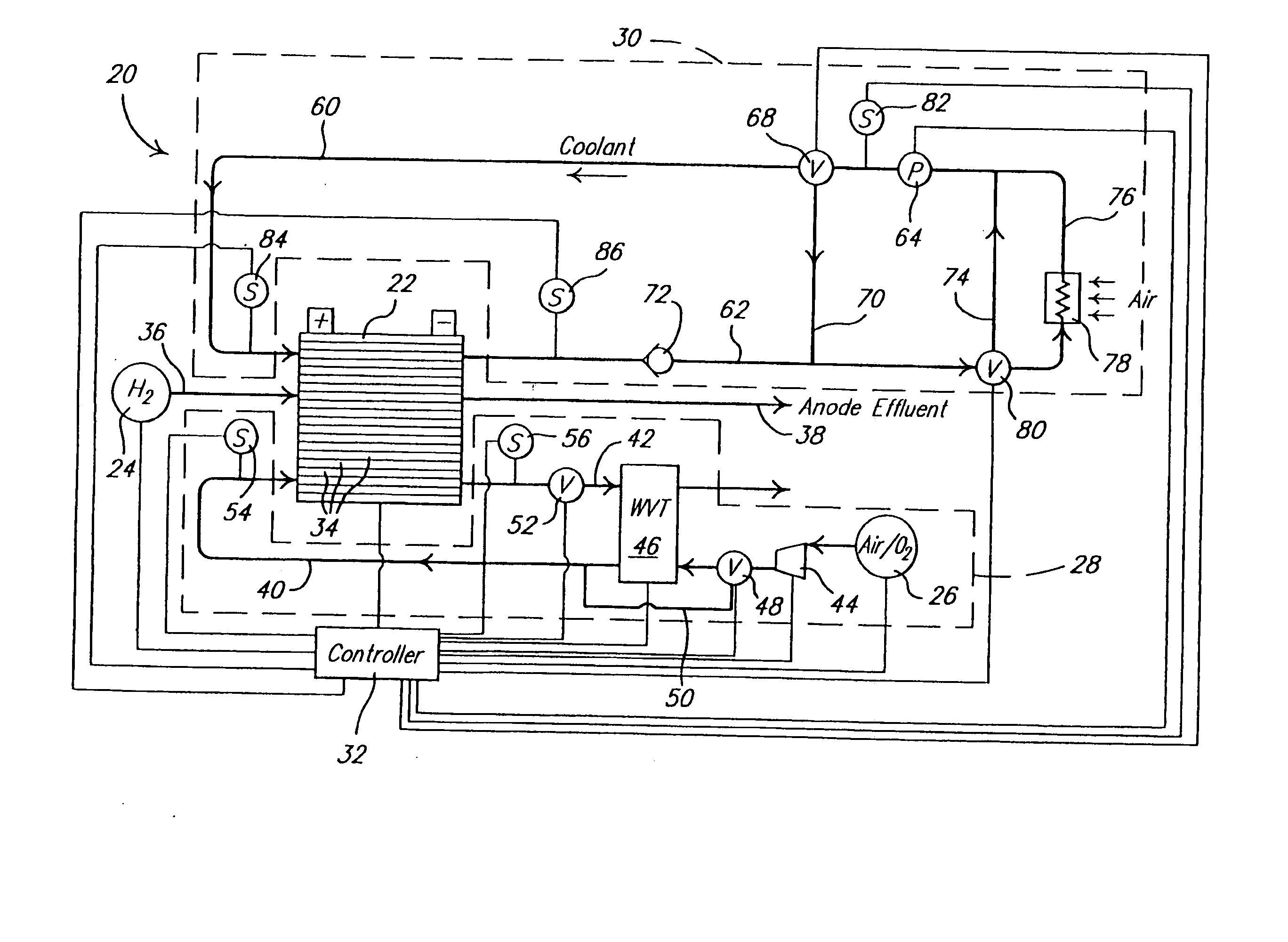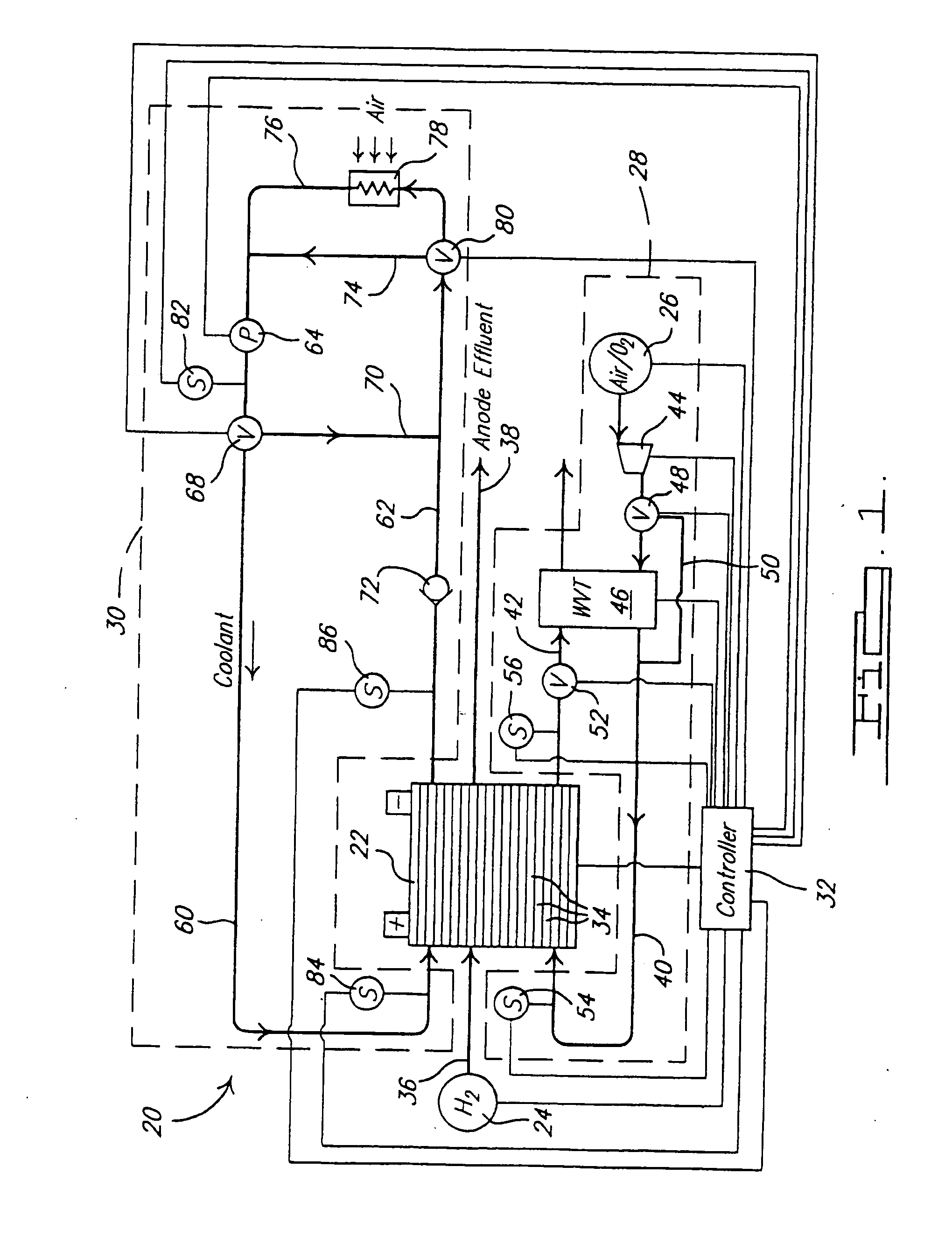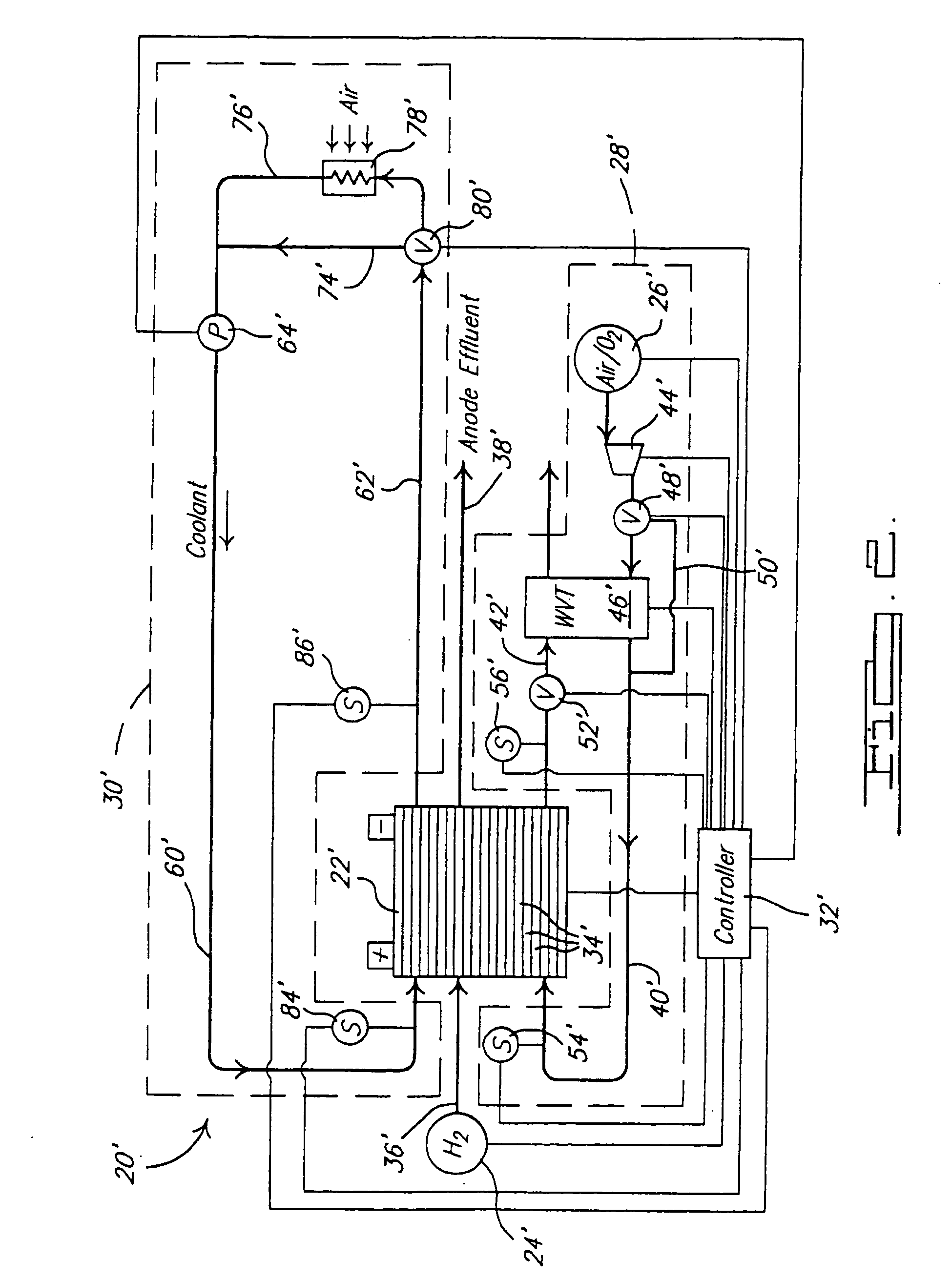Relative humidity profile control strategy for high current density stack operation
a technology of relative humidity and stack operation, which is applied in the direction of fuel cells, electrical equipment, electrochemical generators, etc., can solve the problems of limiting the performance of the fuel cell stack, affecting the performance of the fuel cell, and high current density operation, and achieve the effect of high current density operation of the fuel cell stack
- Summary
- Abstract
- Description
- Claims
- Application Information
AI Technical Summary
Benefits of technology
Problems solved by technology
Method used
Image
Examples
Embodiment Construction
[0017] The following description of the preferred embodiments is merely exemplary in nature and is in no way intended to limit the invention, its application, or uses. As used herein, the term “module” refers to an application specific integrated circuit (ASIC), an electronic circuit, a processor (shared, dedicated or group) and memory that execute one or more software or firmware programs, a combinational logic circuit, or other suitable components that provide the described functionality.
[0018] The present invention is directed to a method of controlling the operation of a fuel cell and / or fuel cell stack so that a desired relative humidity profile is achieved for the membranes in the fuel cell(s). In this regard, the present invention is discussed with reference to specific mechanizations for a fuel cell system having a fuel cell stack therein. It should be appreciated, however, that the mechanizations shown are merely exemplary and that the methods of the present invention are ...
PUM
| Property | Measurement | Unit |
|---|---|---|
| inlet pressure | aaaaa | aaaaa |
| inlet pressure | aaaaa | aaaaa |
| outlet pressure | aaaaa | aaaaa |
Abstract
Description
Claims
Application Information
 Login to View More
Login to View More - R&D
- Intellectual Property
- Life Sciences
- Materials
- Tech Scout
- Unparalleled Data Quality
- Higher Quality Content
- 60% Fewer Hallucinations
Browse by: Latest US Patents, China's latest patents, Technical Efficacy Thesaurus, Application Domain, Technology Topic, Popular Technical Reports.
© 2025 PatSnap. All rights reserved.Legal|Privacy policy|Modern Slavery Act Transparency Statement|Sitemap|About US| Contact US: help@patsnap.com



